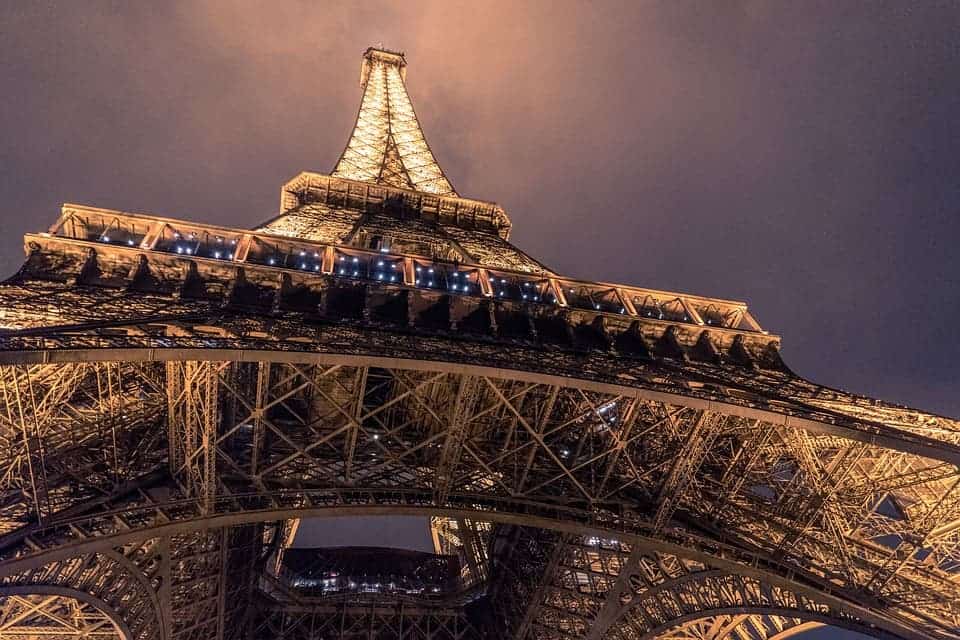Light isn’t the first thing that comes to mind when you think about pollution — but it can be just that.

It’s very hard to look at today’s towns and cities and imagine that, for the longest time in human history, if you wanted a night light your best bet was a full moon. But our enjoyment of lights have also given rise to an interesting, if surprising, type of pollution: light pollution.
The bad light
Us hairless apes rely on sight quite a bit but we have a very hard time seeing in the dark. As such, we’ve put considerable effort into keeping things bright after the sun retires for the day.
And there lies the rub. Availability of light definitely helps, but too much starts having a negative impact on humans and ecosystems alike by impacting natural activity patterns. For us humans, nighttime exposure to light has been linked to disruption of our circadian rhythms (our ‘body clocks’) and related possible conditions: obesity, depression, sleeping disorders, and cancer, among others.

The effects on wildlife are more varied, from relatively minor to outright deadly (such as for moths). These effects almost always extend to entire ecosystems. Light can impact the success (and thereby population numbers) of species that compete over the same ecological role or ‘niche’, and the waking hours of various species. The balance between predators and prey may also be affected.
Unlike chemical or radioactive pollution, it isn’t toxic or destructive directly but still affects living organisms (which, in general, time their activity after natural light cycles). We still have an incomplete understanding of how light pollution affects us or the environment.
Types and sources of light pollution
Light pollution, at its simplest, is the addition of artificial light in environments where natural light may or may not be present. Sources include exterior and interior lighting on buildings, outdoor lights such as in parking lots, advertising, or streetlights. If you’re trying to sleep but a bright light outside is beaming right into your face, you’re experiencing the effects of light pollution.
Image credits New World Atlas of Artificial Sky Brightness / Nataliya Rybnikova via Geekwire / YouTube.
The intensity, timing, quantity, and quality of emitted light can create the adverse effects of light pollution.
Glare is an example of light becoming a pollutant through its intensity. A very bright light can cause instant (but temporary) loss of vision, and can lead to long-time vision deficiencies. Less extreme glare will still impair your vision by causing a loss of contrast in the eye (that’s why we squint on bright days) or be a nuisance by causing discomfort.
The timing of light is what interferes with our circadian rhythms. Artificial light is typically used when the natural one isn’t available, so in essence, it makes daytime ‘last longer’ than it should. A 1985 study on photo pollution reports that “for many nocturnally active animals a natural light-field between sunset and sunrise is a requirement for survival,” and light pollution prevents those conditions from forming. Prolonging daytime also affects brain wave patterns, hormone production, cell regulation mechanisms, and other biological activities.
If you can’t spot any stars in the sky at night, you’re dealing with a light quantity issue. This aspect of light pollution is most evident at night as skyglow, and it’s very hard to find a spot free from it in developed countries. Skyglow is a diffuse light that’s produced on the surface and permeates the area. It’s why clouds appear as bright over an empty night’s sky in the city, and as black over a starry one in remote areas.
Light clutter is another example of a quantity issue. Too many lights bunched up together draw your attention and can become confusing and tiring. Both light clutter and glare are major safety concerns for traffic, especially at night.
The quality of the light itself can also be a problem for species that pick up on light polarization — this is known as polarized light pollution — according to a 2009 study.
How to do something about it and why
Unlike other types of pollutants, light can be managed very easily while still allowing fixtures to perform their intended role. Some of the ways you can help reduce light pollution include:
- If available, use LEDs and lights that emit a warm glow. Blue light (many LEDs emit a blueish light) is carried over a shorter wavelength, so it can travel farther for longer, and you don’t want that.
- Shield outdoor fixtures with opaque covers to keep light from being emitted directly to the sky. You can either buy them with the caps or have a DIY day of making some.
- Use exterior fixtures with cutoff angles. This helps reduce glare, skyglow, and improves visibility by focusing the light where it’s needed. Unshielded light fixtures emit between 30 and 50% of their light skyward or sideways, which is wasted light. The Illuminating Engineering Society of North America (IESNA) defines several outdoor cutoff classifications you can check out for inspiration.
- Obviously, turning off lights when you don’t need or want them on and using sensors to turn them on only when needed is a great way of reducing light pollution.
Light pollution is pervasive throughout most of the world and, like dads everywhere like to remind us, light doesn’t come for free. Futurism reports that the United States alone produces 22,000 gigawatt-hours of energy a year of wasted light (light pollution). They say this translates to roughly “$2.2 billion a year – enough to fund a new mission to Mars […] 3.6 tons of coal or 12.9 million barrels of oil [annually].”
If money doesn’t convince you, think of all the uninterrupted sleep we could all be getting if only we’d cut down on light pollution.


